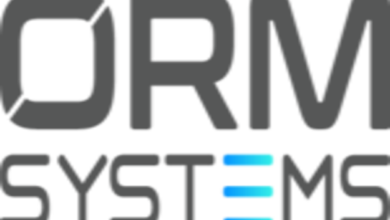What Are the Basics of Starting a Hydroponic Garden?
Understanding Hydroponics
What is Hydroponics?
Hydroponics is a method of growing plants without soil, using mineral nutrient solutions in an aqueous solvent. This technique allows plants to grow faster and produce more yields compared to traditional soil-based gardening.
The Benefits of Hydroponic Gardening
Hydroponic gardening offers numerous benefits:
- Faster plant growth: Plants grow 30-50% faster in hydroponic systems compared to soil.
- Higher yields: Hydroponic gardens can produce up to 20% more yield.
- Space-efficient: Hydroponic systems can be stacked vertically, making them ideal for urban environments.
- Water-efficient: Uses 90% less water than traditional gardening.
- Pest and disease control: Reduces the risk of soil-borne pests and diseases.
Setting Up Your Hydroponic Garden
Choosing the Right Hydroponic System
There are several types of hydroponic systems, each with its own advantages. The main types include:
1. Deep Water Culture (DWC)
Plants are suspended in a nutrient-rich water solution. This system is easy to set up and maintain, making it ideal for beginners.
2. Nutrient Film Technique (NFT)
Nutrient solution flows continuously over the roots, which are supported by a grow tray. This method is popular for growing leafy greens.
3. Drip System
Nutrient solution is dripped onto the base of each plant. This system is highly customizable and can support a variety of plants.
4. Aeroponics
Roots are suspended in the air and misted with nutrient solution. This system promotes rapid growth and high yields.
Selecting Your Plants
Not all plants thrive in hydroponic systems. Some of the best options include:
- Leafy greens: Lettuce, spinach, kale
- Herbs: Basil, mint, cilantro
- Fruiting plants: Tomatoes, peppers, strawberries
Gathering Essential Equipment
To start your hydroponic garden, you will need:
- Grow lights: Essential for indoor gardens to ensure plants receive adequate light.
- pH meter: Maintains the correct pH level of the nutrient solution.
- Nutrient solution: Provides essential minerals for plant growth.
- Grow medium: Supports the plants, options include rockwool, perlite, and coco coir.
- Water pump and air pump: Circulate and oxygenate the nutrient solution.
Maintaining Your Hydroponic Garden
Monitoring Nutrient Levels
Regularly check and adjust the nutrient solution to ensure plants receive the right balance of nutrients. Over or under-fertilizing can harm plant growth.
pH Management
Maintaining the correct pH level (typically between 5.5 and 6.5) is crucial for nutrient absorption. Use a pH meter to monitor and adjust as necessary.
Lighting Requirements
Proper lighting is essential for photosynthesis. LED grow lights are energy-efficient and can be adjusted to provide the appropriate light spectrum for different growth stages.
Temperature and Humidity Control
Optimal temperature (65-75°F) and humidity levels (50-70%) are crucial for plant health. Use fans, heaters, or humidifiers to maintain these conditions.
Troubleshooting Common Issues
Nutrient Deficiencies
Signs of nutrient deficiencies include yellowing leaves, stunted growth, and poor yields. Adjusting the nutrient solution can often resolve these issues.
pH Imbalances
Symptoms of pH imbalances include leaf discoloration and nutrient lockout. Regular pH testing and adjustment are key to preventing these problems.
Pests and Diseases
While hydroponic systems reduce the risk of soil-borne pests and diseases, they are not immune. Inspect plants regularly and use organic or chemical treatments as needed.
Advanced Tips for Hydroponic Success
Using Beneficial Microorganisms
Incorporating beneficial microorganisms can enhance nutrient uptake and plant health. Products like mycorrhizae and beneficial bacteria can be added to the nutrient solution.
Implementing Automation
Automating aspects of your hydroponic system, such as lighting, nutrient delivery, and pH adjustment, can save time and reduce the risk of human error.
Experimenting with Different Systems
As you gain experience, try experimenting with different hydroponic systems to find what works best for your space and plant selection.
Conclusion
Starting a hydroponic garden can be a highly rewarding endeavor, providing a sustainable way to grow plants efficiently. By understanding the basics of hydroponics, selecting the right system and plants, and maintaining optimal conditions, you can enjoy bountiful harvests year-round. Dive into the world of hydroponics and discover the future of gardening today.



